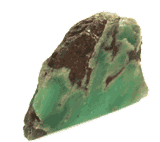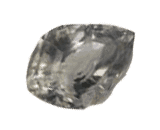| Gemstone Chart |
 Natural Beryl Natural Beryl
Beryl is a semi-precious clear gemstone which usually comes in greens, yellows, and occasionally pinks, ands various shades thereof.
Color: Green, blue, pink, yellow, red
Categories: semi-precious stone
Chemical Composition: Be3Al2(SiO3)6
Crystal Group: Hexagonal
Refractive Index: 1.577(+-.016), 1.583 (+-.017)
Hardness: 7.5
Density: 2.67-2.745
Occurrence: Austria, Columbia, Brazil, Russia, East Africa, Australia, Madagascar, South Africa, Zimbabwe, India, Pakistan, Zambia, Nigeria, U.S.A., Afghanistan
|  Natural Chalcedony Natural Chalcedony
Chalcedony is a catch all term that includes many well known varieties of cryptocrystalline quartz gemstones. They are found in all 50 States, in many colors and color combinations, and in sedimentary, igneous, and metamorphic rocks.
Color: grayish, purple, white, green, blue, lavender, yellow, brown
Categories: semi-precious stone
Chemical Composition: SiO2
Crystal Group: Hexagonal
Refractive Index: 1.530 - 1.539
Hardness: 6.5
Density: 2.57 – 2.64
Occurrence: Brazil, U.S.A. Germany, India, Uruguay, Austarlia, Egypt, Italy, Scotland, South Africa, Namibia, Madagascar, Mexico, Tanzania, and many other localities throughout the world.
|  Natural Chrysoprase Natural Chrysoprase
Chrysoprase is a gemstone variety of chalcedony or cryptocrystalline quartz, colored by trace amounts of nickel.
Categories: semi-precious stone
Chemical Composition: SIO2
Crystal Group: Hexagonal
Refractive Index: 1.544 - 1.553
Hardness: 7
Density: 2.65 - 2.66
Occurrence: Australia, Tanzania
|  Natural Musgravite Natural Musgravite
Musgravite is an extremely rare member of the taaffeite family that was discovered in 1967 in the Musgrave Range of South Australia. It is also one of rare gemstones that have been sought these years for the collection at GAAJ laboratory.
Color: pale olive green, grey, mauve, grey purple
Categories: semi-precious stone
Chemical Composition: (Fe2+,Zn,Mg)2Al6BeO12
Crystal Group: Hexagonal
Refractive Index: 1.717 - 1.739
Density: 3.68
Occurrence: The Musgrave Mountain Ranges in Central Australia
|
|
